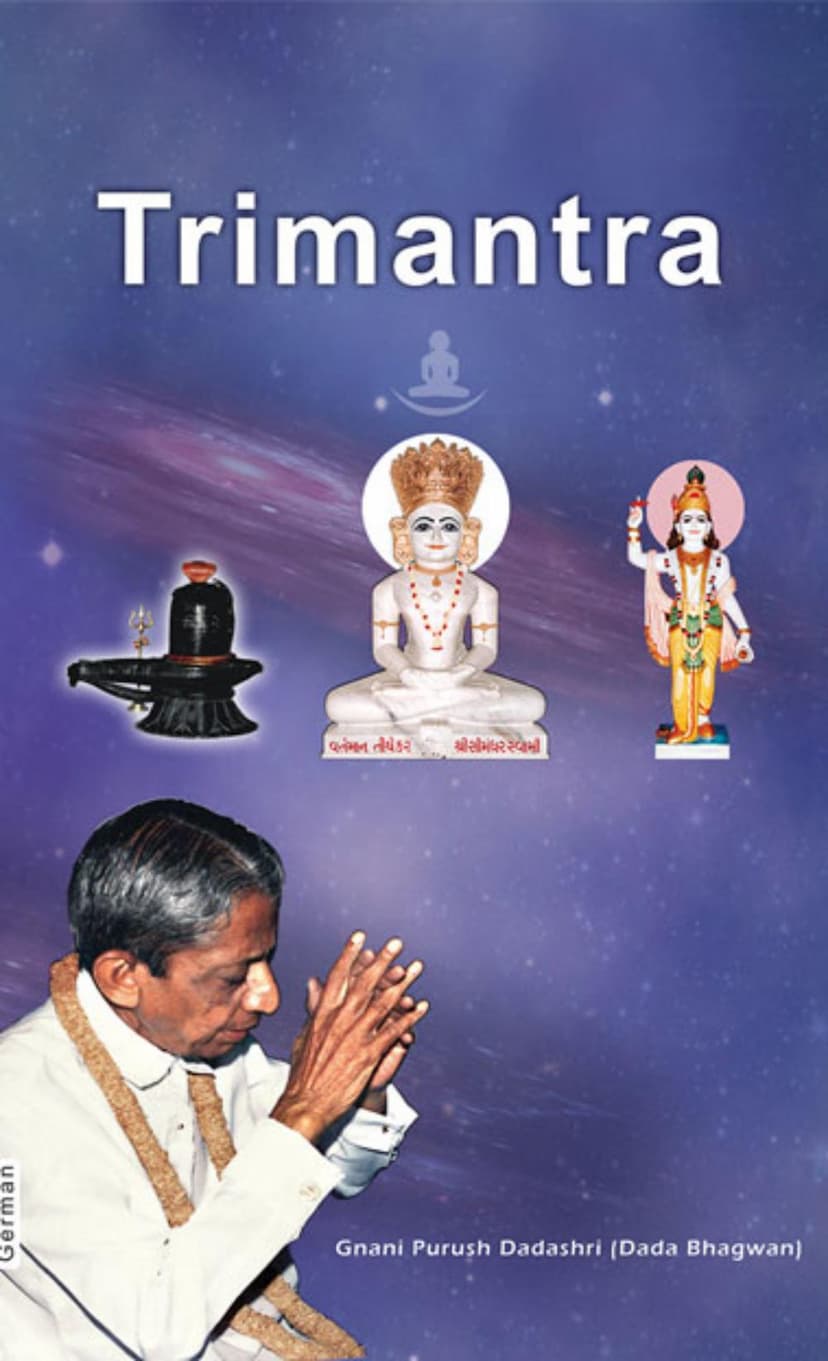Trimantra German
Added to library: September 2, 2025
Loading image...

Summary
This document is the German translation of the book "Trimantra" by Gnani Purush Dadashri (Dada Bhagwan), published by Dada Bhagwan Aradhana Trust.
The book focuses on the Trimantra, which is presented as a powerful tool to overcome obstacles in life. It combines three significant mantras from different Indian religious traditions:
- The Navkar Mantra (Jainism): This is the primary mantra, consisting of five salutations to enlightened beings (Arihants, Siddhas, Acharyas, Upadhyayas, Sadhus) and a concluding verse that dispels negative karma and is considered auspicious. The book elaborates on the precise meaning of each salutation, particularly clarifying the distinction between Arihants (living enlightened beings) and Siddhas (fully liberated souls), emphasizing the importance of revering the currently living Arihant for spiritual progress. It also explains the roles of Acharyas and Upadhyayas.
- Om Namo Bhagavate Vasudevaya (Vaishnavism/Buddhism): This mantra salutes the Vasudevas, beings who have evolved from human to divine beings, like Lord Krishna. The text details the concept of Shalaka Purush (best of men), including Vasudevas, Prati-Vasudevas, and Baldevas, and explains their significance in the spiritual path.
- Om Namah Shivaya (Shaivism): This mantra is dedicated to Shiva, representing the liberated Self or the embodiment of welfare and liberation. It explains that Shiva is not a specific person but a state of being achieved through selfless acceptance of suffering and blessing others.
Key Themes and Teachings:
- The Nature of the Trimantra: The Trimantra is presented as an impartial and unifying mantra, transcending religious divisions. Its recitation is intended to foster universal harmony and peace.
- The Akram Vignan Path: The book introduces Dada Bhagwan's unique spiritual path, "Akram Vignan" (stepless science), which offers a direct route to Self-Realization. This is achieved through a spiritual process called "Gnan Vidhi," which can impart Self-Knowledge in a short time.
- The Role of the Gnani Purush: The text emphasizes that true Self-Realization and understanding of spiritual knowledge can only be attained through a living Gnani Purush (enlightened being). Dada Bhagwan's lineage of Gnani Purushs (including Dr. Niruben Amin and Pujya Deepakbhai Desai) is highlighted as the means to receive this knowledge.
- Understanding the Mantras: A significant portion of the book is dedicated to explaining the profound meaning and proper recitation of each mantra. It stresses the importance of understanding the words and visualizing the revered beings to derive the full benefit.
- Benefits of the Trimantra:
- Overcoming Obstacles: It is believed to destroy all obstacles and reduce the impact of negative karma.
- Inner Peace: Reciting the Trimantra leads to inner peace and reduces worldly conflicts.
- Spiritual Progress: It is a powerful aid on the path to Self-Realization and ultimate liberation (Moksha).
- Unity and Impartiality: It promotes a non-sectarian and inclusive approach to spirituality.
- Practical Advice: The book advises reciting the Trimantra loudly, particularly in solitude, to engage all senses and calm the mind. It also clarifies that while the mantras are beneficial for worldly interactions and reducing difficulties, true Self-Realization comes from the knowledge transmitted by a Gnani.
- The Essence of "Jai Sat Chit Anand": This phrase, meaning "Awareness of the Eternal is Bliss," is presented as a universal blessing that encompasses all beings and all religions.
In essence, "Trimantra German" serves as a guide to understanding and utilizing the Trimantra as a spiritual practice to navigate life's challenges and progress towards Self-Realization, as taught by Dada Bhagwan.